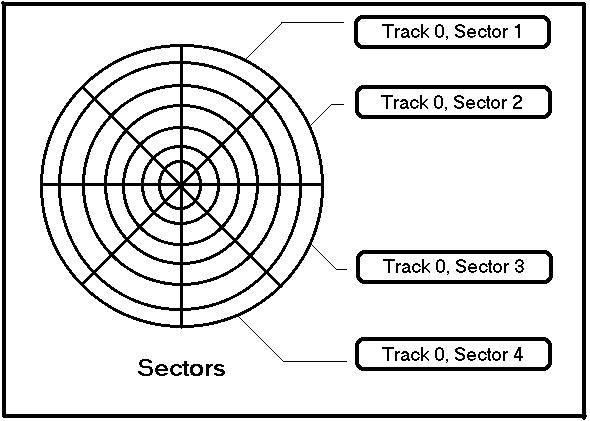Each track can hold thousands of bytes of data and generally this storage is more than 5000 bytes. Therefore if we make a track the smallest unit of storage on the disk it will be the wastage of disk space, because by doing this the small files having the size less then 5000 bytes will waste the amount of space and generally it is quite possible to having a number of files in the disk which are much smaller than this size.
In this way making a track the smallest unit of storage will cause the small files to waste a large amount of space. Therefore, each track is broken into smaller units called sectors. The size of each sector is 512 bytes i.e. a sector can hold 512 bytes of information.
Thus the basic unit of data storage on a hard disk is the sector. The name sector refers to a pie-shaped angular section of a circle, bounded on two sides by radii and the third by the perimeter of the circle. You can see a logical figure representing sectors on a track given next.

Thus on a hard disk containing concentric circular tracks that shape would define a sector of each track of the platter surface that it intercepted. This is what is called a sector in the hard disk world is a small segment along the length of a track.
As according to the standard, each sector of a hard disk can store 512 bytes of user data. However, actually sector holds much more than 512 bytes of information. Additional bytes are needed for control structures and other information necessary to manage the drive, locate data and perform other support functions.
The exact details of how a sector is structured depend on the drive model and manufacturer. However, the contents of a sector usually include the following general elements:
- ID Information: Conventionally, space is left in each sector to identify the sector's number and location. This is used for locating the sector on the disk and also includes status information about the sector in this area. For example, a bit is commonly used to indicate if the sector has been marked defective and remapped.
- Synchronization Fields: These are used internally by the drive controller to guide the read process.
- Data: The actual data in the sector.
- Error Correcting Codes (ECC): Error correcting codes are used to ensure data integrity.
- Gaps: Gaps are basically one or more spacers added as necessary to separate other areas of the sector, or provide time for the controller to process what it has read before reading more bits.
|


